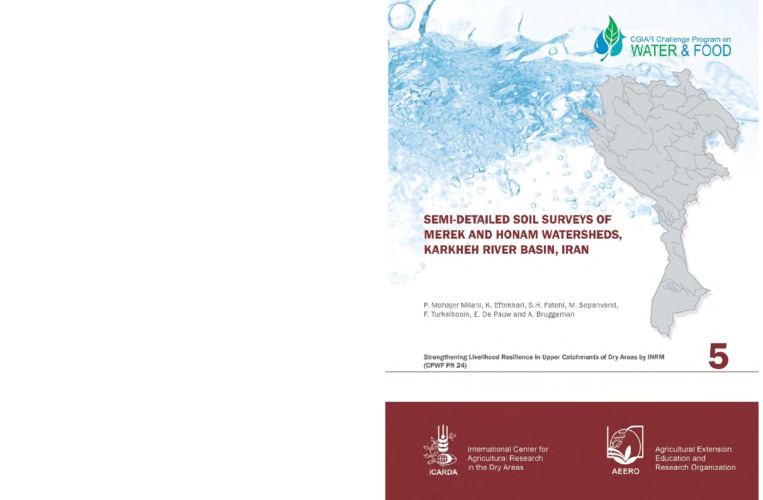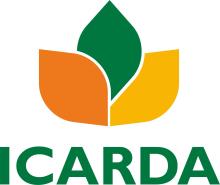Resource information
The study of soils is important for landuse planning, agriculture, and natural resource development programs. Determination of soil characteristics and limitations is one of the most important duties of soil researchers. This report presents a semi-detailed soil survey of Merek watershed in Kermanshah Province, and Honam watershed in Lorestan Province, Iran. It is hoped that the analyses and recommendations will be of value to those interested in the optimum use of Iran’s land and water resources.
The Merek watershed is located southeast of Kermanshah, the provincial capital, and has an area of 24,200 ha. Its climate is cold semi-arid, and soil temperature and moisture regimes are thermic and xeric, respectively. Lithological composition is mainly limestone, dolomite, marl, claystone and sandstone.
The Honam watershed is located south of Alashtar city and has an area of 14,200 ha. The area’s high mountains contribute to a wet climate, and soil temperature and moisture regimes are mesic and xeric, respectively. Lithological composition comprises limestone, dolomite, marl, quartzite, shale, sandstone, and conglomerate.
Interpretive map units were produced for both watersheds using a geo-pedologic approach. The soil morphology, physical, and chemical characteristics determined in each map unit were: color, soil structure, rock fragments, voids, roots, clay cutans, soil reaction, soil salinity, soil alkalinity, calcium carbonate (CaCO3), organic carbon, cation exchange capacity, soil texture, field capacity, and permanent wilting point.
In Merek, three landscapes, seven reliefs or moldings, and 21 land units were distinguished. Three soil orders were identified: Entisols, Inceptisols and Vertisols, with Entisols found in the mountains and hilly areas. Soil textures in the profiles are clay or silt clay. A subangular blocky structure is the dominant soil structure. The amount of subsurface gravel (fine and coarse) in the profiles dug on mountains and hilly areas varies between 25% and 60%. The pH varies between 7.3 and 7.9, electrical conductivity varies between 0.4 and 0.8 ds m-1, organic carbon varies between 1% and 3%, and the amount of CaCO3 in surface horizons varies between 17% and 32%.
In Honam, four landscapes, 10 reliefs or moldings, and 37 land units were distinguished. Two soil orders were identified: Entisols and Inceptisols, with Entisols found in the mountains and hilly areas and Inceptisols in the piedmonts and valleys. Textures in the soil profiles are clay or silty clay and the dominant soil structure is subangular blocky. The amount of subsurface gravel (fine and coarse) in the profiles dug on mountains and hilly areas varies between 0% and more than 75%. The pH varies between 7.3 and 8.0, electrical conductivity varies between 0.2 and 7.6 ds m-1, organic carbon varies between 1% and 3.7%, and the amount of CaCO3 in surface horizons varies between 1.7% and 43.42%. Topography, soil depth, stoniness, water erosion, and heavy soil texture (especially in the surface horizons) are the main limiting factors in the study area.


